- Clone
- W6/32 (See other available formats)
- Regulatory Status
- RUO
- Other Names
- Major Histocompatibility Class I, MHC class I
- Isotype
- Mouse IgG2a, κ
- Barcode Sequence
- TATGCGAGGCTTATC
| Cat # | Size | Price | Quantity Check Availability | ||
|---|---|---|---|---|---|
| 311449 | 10 µg | $369.00 | |||
MHC class I antigens associated with β2-microglobulin are expressed by all human nucleated cells. MHC class I molecules are involved in presentation of antigens to CD8+ T cells. They play an important role in cell-mediated immune responses and tumor surveillance.
Product Details
- Verified Reactivity
- Human, Cynomolgus, Rhesus
- Reported Reactivity
- African Green, Baboon, Cat, Cow, Chimpanzee
- Antibody Type
- Monoclonal
- Host Species
- Mouse
- Formulation
- Phosphate-buffered solution, pH 7.2, containing 0.09% sodium azide and EDTA
- Preparation
- The antibody was purified by chromatography and conjugated with TotalSeq™-C oligomer under optimal conditions.
- Concentration
- 0.5 mg/ml
- Storage & Handling
- The antibody solution should be stored undiluted between 2°C and 8°C. Do not freeze.
- Application
-
PG - Quality tested
- Recommended Usage
-
Each lot of this antibody is quality control tested by immunofluorescent staining with flow cytometric analysis and the oligomer sequence is confirmed by sequencing. TotalSeq™-C antibodies are compatible with 10x Genomics Chromium Single Cell Immune Profiling Solution.
To maximize performance, it is strongly recommended that the reagent be titrated for each application, and that you centrifuge the antibody dilution before adding to the cells at 14,000xg at 2 - 8°C for 10 minutes. Carefully pipette out the liquid avoiding the bottom of the tube and add to the cell suspension. For Proteogenomics analysis, the suggested starting amount of this reagent for titration is ≤ 1.0 µg per million cells in 100 µL volume. Refer to the corresponding TotalSeq™ protocol for specific staining instructions.
Buyer is solely responsible for determining whether Buyer has all intellectual property rights that are necessary for Buyer's intended uses of the BioLegend TotalSeq™ products. For example, for any technology platform Buyer uses with TotalSeq™, it is Buyer's sole responsibility to determine whether it has all necessary third party intellectual property rights to use that platform and TotalSeq™ with that platform. - Application Notes
-
Clone W6/32 recognizes residues in the N terminus of the human ß2-microglobulin molecule21.
Additional reported applications (for the relevant formats) include: immunoprecipitaton2, Western blotting (non-reducing)3, immunohistochemical staining of acetone-fixed frozen tissue sections4,5, blocking6,7, inhibition of NK cell-mediated lysis10, and activation8,9. Clone W6/32 has been reported not to be suitable for immunohistochemistry on paraffin sections17. The LEAF™ purified antibody (Endotoxin < 0.1 EU/µg, Azide-Free, 0.2 µm filtered) is recommended for functional assays. For highly sensitive assays, we recommend Ultra-LEAF™ purified antibody (Cat. No. 311428) with a lower endotoxin limit than standard LEAF™ purified antibodies (Endotoxin < 0.01 EU/µg). - Additional Product Notes
-
TotalSeq™ reagents are designed to profile protein levels at a single cell level following an optimized protocol similar to the CITE-seq workflow. A compatible single cell device (e.g. 10x Genomics Chromium System and Reagents) and sequencer (e.g. Illumina analyzers) are required. Please contact technical support for more information, or visit biolegend.com/totalseq.
The barcode flanking sequences are CGGAGATGTGTATAAGAGACAGNNNNNNNNNN (PCR handle), and NNNNNNNNNCCCATATAAGA*A*A (capture sequence). N represents either randomly selected A, C, G, or T, and * indicates a phosphorothioated bond, to prevent nuclease degradation.
View more applications data for this product in our Scientific Poster Library. -
Application References
(PubMed link indicates BioLegend citation) -
- Darrow TL, et al. 1989. J. Immunol. 142:3329.
- Stern P, et al. 1987. J. Immunol. 138:1088.
- Tran TM, et al. 2001. Immunogenetics 53:440.
- Barbatis C, et al. 1981. Gut 22:985.
- Ayyoub M, et al. 2004. Cancer Immunity 4:7.
- DeFelice M, et al. 1990. Cell. Immunol. 126:420.
- Fayen J, et al. 1998. Int. Immunol. 10:1347.
- Turco MC, et al. 1988. J. Immunol. 141:2275.
- Geppert TD, et al. 1989. J. Immunol. 142:3763.
- Wooden SL, et al. 2005. J. Immunol. 175:1383.
- Nagano M, et al. 2007. Blood 110:151.
- McLoughlin RM,et al.2008. J. Immunol. 181:1323. PubMed
- Takahara M, et al.2008. J. Leukoc. Biol. 83:742. PubMed
- Lunemann A, et al.2008. J. Immunol. 181:6170. PubMed
- Laing BJ, et al. 2010. J. Thorac Cardiovasc Surg. 139:1402. PubMed
- Yoshino N, et al. 2000. Exp. Anim. (Tokyo) 49:97. (FC)
- Vambutas A, et al. 2000. Clin. Diagn. Lab. Immun. 7:79.
- Coppieters KT, et al. 2012. J. Exp. Med. 209:51. (epitope)
- Crivello P, et al. 2013. Hum Immunol. 22:100. PubMed
- Jung Y, et al. 2015. Mol Cancer Res. 13:197. PubMed
- Shields MJ. Ribaudo RK. 1998. Tissue Antigens. 51(5):567-70. (epitope)
- Product Citations
-
- RRID
-
AB_2800816 (BioLegend Cat. No. 311449)
Antigen Details
- Structure
- Ig superfamily
- Distribution
-
All nucleated cells
- Function
- Antigen presentation
- Ligand/Receptor
- CD3/TCR, CD8
- Biology Area
- Immunology, Innate Immunity
- Molecular Family
- MHC Antigens
- Antigen References
-
1. Barclay AN, et al. Eds. 1993. The Leukocyte Antigen FactsBook. Academic Press Inc. San Diego.
- Gene ID
- 3105 View all products for this Gene ID
- UniProt
- View information about HLA-A on UniProt.org
Other Formats
View All HLA-A,B,C Reagents Request Custom ConjugationCompare Data Across All Formats
This data display is provided for general comparisons between formats.
Your actual data may vary due to variations in samples, target cells, instruments and their settings, staining conditions, and other factors.
If you need assistance with selecting the best format contact our expert technical support team.
-
APC anti-human HLA-A,B,C

Human peripheral blood lymphocytes stained with W6/32 APC -
FITC anti-human HLA-A,B,C

Human peripheral blood lymphocytes stained with W6/32 FITC -
PE anti-human HLA-A,B,C
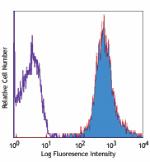
Human peripheral blood lymphocytes stained with W6/32 PE -
PE/Cyanine5 anti-human HLA-A,B,C
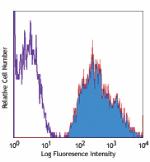
Human peripheral blood lymphocytes stained with W6/32 PE/Cya... -
Purified anti-human HLA-A,B,C
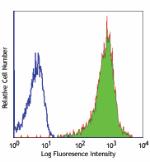
Human peripheral blood lymphocytes were stained with purifie... 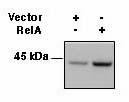
HEK293 cells were transfected with RelA or empty vector and ... -
Alexa Fluor® 488 anti-human HLA-A,B,C
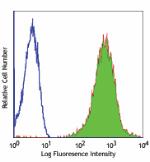
Human peripheral blood lymphocytes stained with W6/32 Alexa ... -
Alexa Fluor® 647 anti-human HLA-A,B,C
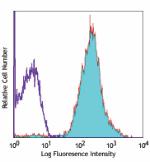
Human peripheral blood lymphocytes stained with W6/32 Alexa ... -
Pacific Blue™ anti-human HLA-A,B,C

Human peripheral blood lymphocytes stained with W6/32 Pacifi... -
PerCP anti-human HLA-A,B,C
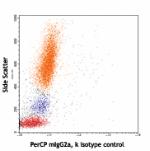
Human peripheral blood lymphocytes, monocytes and granulocyt... 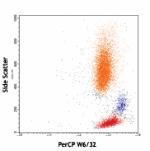
-
APC/Cyanine7 anti-human HLA-A,B,C
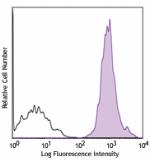
Human peripheral blood lymphocytes were stained with HLA-A,B... -
PerCP/Cyanine5.5 anti-human HLA-A,B,C
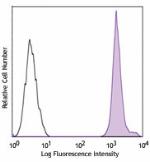
Human peripheral blood lymphocytes were stained with HLA-A,B... -
Ultra-LEAF™ Purified anti-human HLA-A,B,C

Human peripheral blood lymphocytes stained with Ultra-LEAF™ ... -
PE/Cyanine7 anti-human HLA-A,B,C
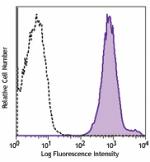
Human peripheral blood lymphocytes were stained with HLA-A,B... -
Brilliant Violet 510™ anti-human HLA-A,B,C
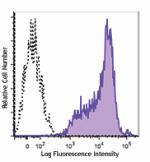
Human peripheral blood lymphocytes were stained with HLA-A, ... -
Alexa Fluor® 700 anti-human HLA-A,B,C
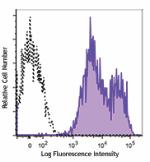
Human peripheral blood lymphocytes were stained with HLA-A,B... -
PE/Dazzle™ 594 anti-human HLA-A,B,C

Human peripheral blood lymphocytes were stained with HLA-A,B... -
Biotin anti-human HLA-A,B,C
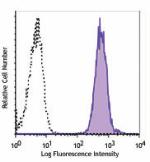
Human peripheral blood lymphocytes were stained with biotiny... -
Brilliant Violet 605™ anti-human HLA-A,B,C
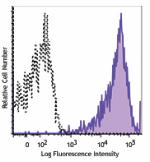
Human peripheral blood lymphocytes were stained with HLA-A,B... -
APC/Fire™ 750 anti-human HLA-A,B,C
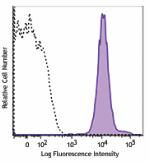
Human peripheral blood lymphocytes were stained with HLA-A,B... -
TotalSeq™-A0058 anti-human HLA-A,B,C
-
TotalSeq™-C0058 anti-human HLA-A,B,C
-
TotalSeq™-B0058 anti-human HLA-A,B,C
-
Spark NIR™ 685 anti-human HLA-A,B,C

Human peripheral blood lymphocytes were stained with HLA-A,B... -
TotalSeq™-D0058 anti-human HLA-A,B,C
-
GMP Ultra-LEAF™ Purified anti-human HLA-A,B,C SF
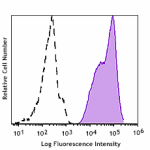
Human peripheral leukocytes were stained with GMP Ultra-LEAF... -
GMP Ultra-LEAF™ Biotin anti-human HLA-A,B,C SF

Human peripheral leukocytes were stained with GMP Ultra-LEAF... -
Spark UV™ 387 anti-human HLA-A,B,C

Human peripheral blood lymphocytes were stained with anti-hu... 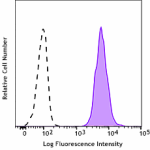
Human peripheral blood lymphocytes were stained anti-human H... -
Spark Red™ 718 anti-human HLA-A,B,C (Flexi-Fluor™)
